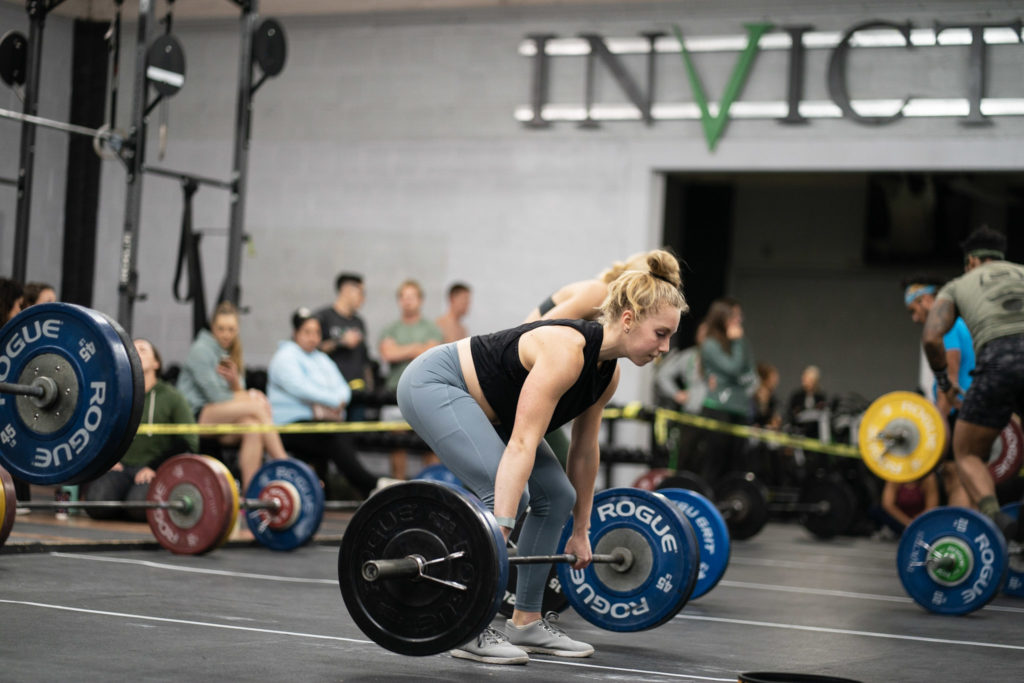
3 Points of Performance for Hinging Movements
Written by Kirsten Ahrendt
Here’s a quick review of some of the finer points of hinging. This is stuff that you’ve probably heard coaches say before, but it doesn’t always “click”. Sometimes you need to hear it again in a different way, or you simply need to have a rep or two where you actually “feel it”.
Points of Performance for Hinging Movements
Neutral Feet (not turned out) – balance of weight on big toe, pinky toe, and heel.
Create Torque (internal – not external) from the hip through to the foot. This is where you try to “slide your feet across the ground, but have it ‘screwed’ into the ground. It fires up your hamstrings and adductors.
Breathe into Your “Laugh Muscles” (and ability to turn those muscles on) – in the start of your deadlift, mid-deadlift, and finish positions. AKA “breathing + bracing”.
Why does easy weight sometimes feel hard?
“Easy feeling lifts” > some reps of a lift feel “hard”. Other times the same exact weight feels easy. Why is that? This is because of 2 things:
Optimal Set-Up Position for Hinging
The relation of the weight of the bar to the relation of your center of mass is important. If you and the bar are in the “suboptimal position” you will be pulling from a disadvantaged position in terms of physics. Strength does not overcome physics. Physics rules all. So make sure your set-up position is best for you and your unique body type. Generally that means keep weight close to you.
Create Tension (throughout the system) – When you BRACE, and turn muscles on like your grip, lats, find tension with your foot, and prime your hamstring, you are LIKE A PISTON READY TO FIRE. That’s what we want before we lift. So the more internal tension you can create, the easier lifts will feel.
Deadlift Set-Up Mistakes
Making sure to be in the perfect set-up position is important because it helps prevent injury and also puts you in position to lift as efficiently as possible. If your bar is too far from your shins or your shoulders too far in front of the bar, it’s harder to get into the proper brace of the spine. And if the hips are too high or too low, you are not utilizing the proper – and strongest – muscles for this hip hinging movement. Look out for these mistakes on your deadlift to set you up for a stronger and safer lift.
Breathing While Bracing
Or, breathing while moving a rep. A client asked during class, “Should we be exhaling when we stand up the rep of the deadlift?”
The answer: You CAN. And many people find that to be an optimal breathing pattern for a deadlift (inhale in the set-up, exhale as you stand). You could also do the opposite. That’s the cool thing about breathing & bracing…once you get GOOD at breathing independently of bracing, you can really play around with it as a tool. But that’s the thing…breathing does not equate to bracing, but it is certainly a tool that can facilitate a better brace.
How to Practice Breathing and Bracing
The easiest way to practice your breathing and bracing skills in warm-ups with movements like dead bugs, bird dogs, hollow holds, and during isometric core exercises like prone planks, side planks and superman holds.
Invictus University
If you’re interested in getting better at coaching breathing and bracing, stay tuned for more learning opportunities coming your way soon through Invictus University.
